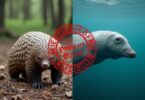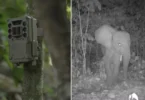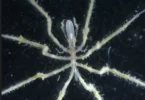When we think of sunscreen, it’s hard not to picture a tube or spray that we apply to protect ourselves from the sun’s harsh UV rays. But what if I told you that some birds have their own natural sunscreen? Yes, that’s right—certain birds have a special gland near their tails that produces a natural oil, acting as their very own sunblock. It’s nature’s ingenious way of ensuring these creatures stay safe from the sun’s damaging effects.
The Uropygial Gland: Birds’ Natural Sunscreen
This incredible feature comes from a gland called the uropygial gland, located near the base of a bird’s tail. You’ve probably seen birds preen themselves—cleaning their feathers and spreading oil over them. That oil isn’t just for grooming. It serves multiple purposes, one of which is to protect the bird from the sun.
The oil produced by the uropygial gland acts like a natural sunscreen, preventing the bird’s delicate skin and feathers from getting damaged by the sun. Birds in sunny areas, such as tropical regions or high altitudes, rely on this oil for UV protection. It’s a fantastic example of nature providing animals with what they need to survive in their specific environments.
How Does It Work?
When birds preen, they spread this oil from the uropygial gland over their feathers. It not only keeps their feathers smooth, waterproof, and in good shape but also forms a thin layer of protection from the sun. This oil helps block UV rays, much like how our sunscreen prevents sunburns. In essence, it’s the bird’s way of staying safe from the sun without needing to worry about applying lotion or sunscreen regularly.
But the benefits don’t stop there. This oil also helps maintain healthy feathers, prevents infections, and has antimicrobial properties—keeping birds not just protected from the sun but from other potential threats, too.
A Built-In, All-Natural Solution
One of the most fascinating aspects of this adaptation is that birds don’t need to do anything extra to keep themselves protected. Unlike humans, who have to remember to apply sunscreen before heading out into the sun, birds have an automatic, self-replenishing system that does the work for them. Every time they preen, they’re essentially reapplying their natural sunscreen, ensuring they’re always shielded from the harmful effects of the sun.
This natural protection system is an elegant solution to an everyday problem. While we might have to reapply sunscreen or wear protective clothing, birds have their built-in mechanism that works effortlessly. It’s a true marvel of evolution.
More Than Just Sunscreen: Health Benefits of Preening Oil
While we often focus on the sunscreen aspect, the uropygial gland’s oil does a lot more. For one, it helps birds maintain feather health and keeps their plumage waterproof. It also plays a vital role in bird hygiene. By spreading the oil over their feathers, birds ensure they are free from parasites and harmful bacteria. In other words, this gland does double duty—acting as both a shield from the sun and a protective layer against potential threats.
A Reminder of Nature’s Ingenuity
The uropygial gland is just one of many fascinating adaptations found in the animal kingdom. Birds, with their complex behaviors and remarkable abilities, continually remind us of the ingenuity of nature. This natural sunscreen not only helps them survive in harsh conditions but also shows us that sometimes, nature’s solutions are simpler—and more efficient—than we think.








